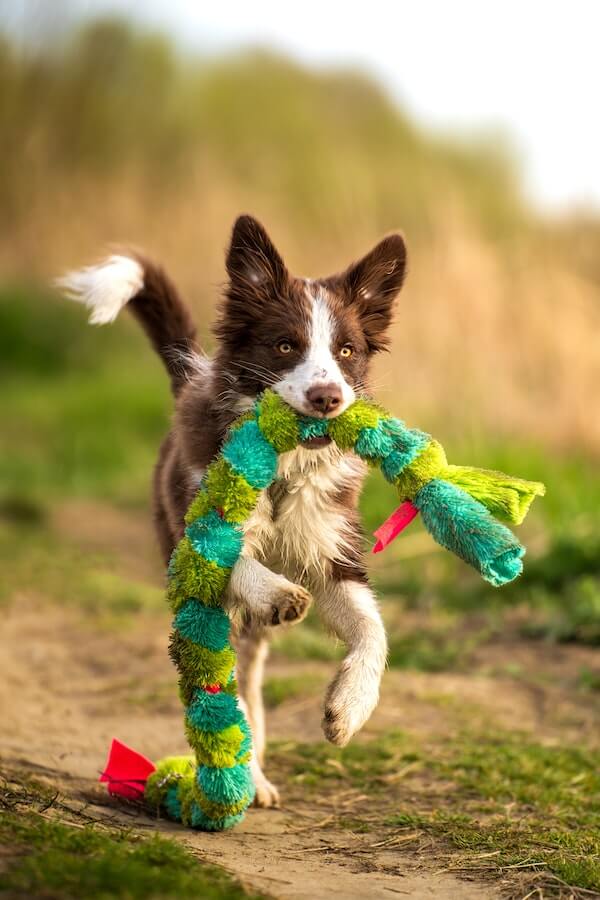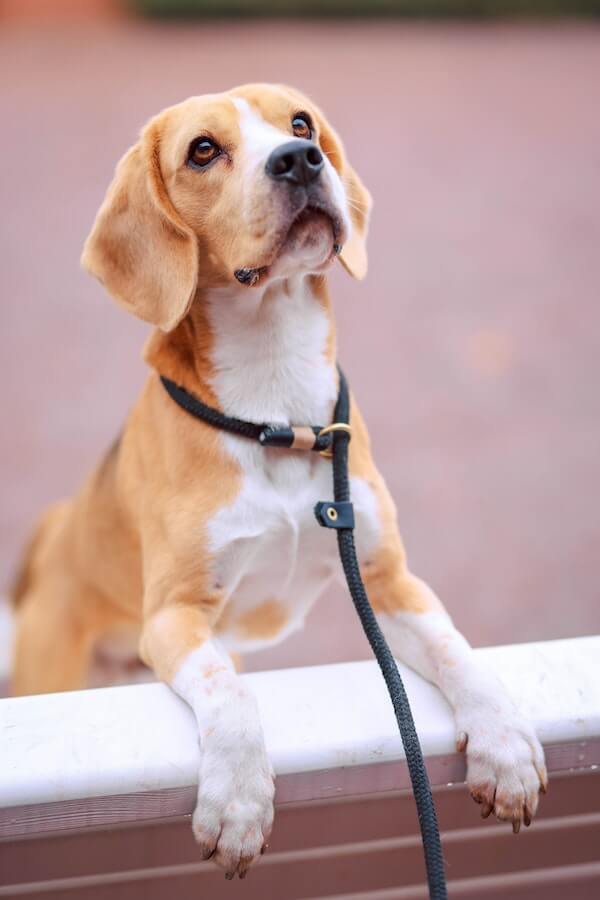
Are you the proud owner of a reactive pup? Do you have trouble taking them out in public?
Training a reactive dog can be daunting, but with patience and consistency, it is possible to make progress.
Introducing your pup to new places and people can help increase their confidence and build a positive experience.
With this guide, you’ll learn how to start training your reactive pup so they can become a calmer, happier companion. So let’s get started!
Signs of a reactive dog
A reactive dog is a four-legged ball of energy that often displays signs of stress and anxiety.
They are common among rescue pets and can be easily mistaken for aggressive behavior when in fact the opposite is true – they respond to fear or perceived danger with barking, lunging, etc.
The five signs of a reactive dog can give us insight into their emotional state so we can better support them through challenging situations.
1. Barking:
Reactive dogs bark excessively at other people or animals as an attempt to protect themselves from potential threats.
2. Lunging:
Reactive dogs may lunge at other people or animals as an expression of their discomfort with the situation and to put distance between them and the perceived threat.
3. Cowering:
Reactive dogs may also cower when they are feeling frightened or anxious. This can be a sign of submission in hopes that the perceived threat will back off.
4. Growling:
This is an obvious sign of aggression but with reactive dogs, it usually means they feel threatened and need space to calm down before approaching them further.
5. Trembling:
Reactive dogs may tremble when feeling overwhelmed or fearful in a situation, as this is their body’s natural response to stress and anxiety.
By being aware of these signs and understanding how your dog perceives its environment, you can better manage situations where your pup might become reactive and help keep them feeling safe and secure.

What causes a dog to be reactive?
There are many reasons why a dog may become reactive. Here are five of the most common causes:
1. Fear:
Dogs can become fearful or anxious in situations that they perceive to be dangerous or unfamiliar, leading to reactive behavior such as barking, growling, or lunging.
This fear response is an evolutionary adaptation meant to protect them from potential harm.
2. Genetics:
Some dogs are genetically predisposed to being more reactive than others due to their breed and/or individual temperament.
Certain breeds such as German Shepherds, Chihuahuas, and Border Collies tend to have higher energy levels and therefore require additional training and socialization to prevent reactive behaviors from forming.
Certain dog breeds are more anxious than others too, that may cause them to be reactive.
3. Lack of Early Socialization:
Early socialization is essential for puppies in order to ensure they learn how to behave around other animals and people.
Puppies who are not properly socialized can become overly reactive if exposed to unfamiliar stimuli, as their lack of experience makes them unsure of how to act in those situations.
4. Lack of Boundaries:
If a dog does not understand their boundaries and limits or does not receive enough mental and physical stimulation, this can often lead to boredom-related behavior such as barking and charging at other dogs, vehicles, or people.
5. Trauma:
Dogs that have experienced traumatic events may develop fear-based aggression which can manifest itself through reactive behaviors when triggered by certain stimuli.
This type of aggression requires specialized training from an animal behavior

How to train a reactive dog?
Training a reactive dog doesn’t have to be a daunting task. In fact, it can be an incredibly rewarding experience for both you and your pup if done correctly.
Here are 5 steps to help ensure that training your reactive dog is done with precision, patience and understanding:
Step One: Establish a Safe Environment:
When working with reactive dogs, it is important to create an environment that is safe and calming for your pup.
This can be done by removing any triggers or distractions that may cause them to become overly excited or overwhelmed.
Make sure they have plenty of space to work in and that there are no other animals or people around to cause further stress.
Additionally, if you plan on using treats as a reward system during training, make sure the treats are small enough so your dog does not feel overwhelmed when receiving them.
Step Two: Identify Triggers:
Reactivity usually occurs when your dog senses something that scares them or causes them to become overly excited.
It is important to identify what triggers this reaction in your pup and learn how to address it.
This can be done by taking note of their body language and vocal cues, as well as observing their environment and the things that cause their reactions.
Step Three: Desensitize:
Once you have identified the triggers of your pup’s reactivity, it is time to start desensitizing them to these stimuli.
To do this, slowly introduce them in a controlled manner while rewarding positive behavior with treats or verbal praise.
As they become more comfortable with each stimulus, increase the difficulty level accordingly until they can remain calm in any situation.
Step Four: Modify Behavior:
Teaching your dog to replace their unwanted behavior with something more desirable is a great way to address reactivity.
For example, if they bark in response to a trigger, you can teach them to lie down or move away instead.
This will help them learn that their reaction does not have the desired effect and will eventually reduce the intensity of their reactions over time.
Step Five: Reward Good Behaviors:
Finally, make sure to reward your pup for any positive behaviors they exhibit during training sessions.
By providing treats or verbal praise after each successful exercise, you can reinforce good behaviors and create consistency in your pup’s behavior over time.
This will also help keep them motivated and eager to learn new things.
By following these steps, you can effectively train your reactive dog in a safe and positive environment.
With patience, consistency, and lots of rewards during training sessions, your pup will soon be better able to control their reactivity and become a happy member of the family!

Conclusion
Training a reactive dog can be a challenge, but with the right patience and dedication, it is completely possible. Above all, it requires consistency in the approach and rewards for positive behavior.
It’s also important to remember that each dog is an individual and will respond differently to different approaches – so don’t be afraid to experiment!
With patience and understanding, you’ll soon have a happy pup who loves interacting with others.
- 7 Dog Breeds With Webbed Feet And Why Do They Have Them - July 19, 2023
- 10 Best Fish For Small Tanks That Make Perfect Pets - July 18, 2023
- How to Breed Guinea Pigs: A Detailed Guide - July 17, 2023


GIPHY App Key not set. Please check settings